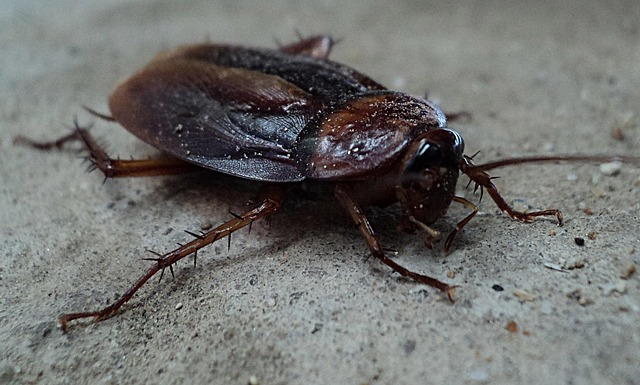Early detection is key to effective residential sowbug treatment. Look for pinholes, tracks, and musty odors in dark, damp areas. Inspect hidden spots like furniture, closets, and baseboards. Assess infestation scope to decide on DIY or professional treatment. Swift action involves vacuuming, sealing entry points, and using insect traps. Prevent future infestations through cleanliness, sealing cracks, and natural repellents. Regular inspections and prompt addressing of issues are crucial. For severe cases, professional residential sowbug treatment offers tailored solutions.
“Unraveling the mysteries of a sowbug infestation is crucial for homeowners facing these persistent pests. This comprehensive guide tackles the common signs, from peculiar crumbs to mysterious tunnels, that indicate their presence in your home. We delve into assessing the extent of the problem in residential areas and offer effective strategies for treatment, ensuring your space remains bug-free. Additionally, discover preventive measures to avoid future sowbug invasions and reclaim your living environment.”
Identifying Sowbug Infestation: Common Signs and Symptoms
In the event of a sowbug infestation, recognizing the signs early is crucial for effective residential sowbug treatment. These pests are known for their nocturnal behavior and preference for dark, damp areas, making it essential to pay close attention to unusual activities or damage within your home. Common indicators include small pinholes in fabric or paper items, visible tracks on surfaces, and a peculiar musty odor—especially in areas with poor ventilation or water leaks.
Close inspection of affected zones, particularly under furniture, in closets, and along baseboards, can reveal these tiny creatures scurrying about. Sowbugs leave behind traces of their presence, which, if left unchecked, may lead to extensive damage to fabrics, wallpaper, and even structural components over time. Prompt action is key; identifying the problem early allows for more targeted and efficient residential sowbug treatment strategies.
Evaluating the Extent of the Infestation in Residential Areas
When evaluating a sowbug infestation in residential areas, understanding the extent of the problem is crucial for effective treatment. Start by inspecting common hiding spots such as dark, damp corners, under debris or logs, and spaces behind appliances or furniture. Look for live bugs, egg cases, or silken webs, which are clear indicators of an active infestation. Pay close attention to walls, floors, and ceilings, as sowbugs can create small holes in these surfaces, leading to structural damage over time.
Next, assess the size of the affected area. Is it localized to a single room or has it spread throughout the house? The extent of the infestation will guide the treatment approach. For minor issues, DIY methods like sealing entry points and applying insecticidal treatments can be effective. However, for larger infestations, professional residential sowbug treatment may be necessary to ensure complete eradication and prevent future recurrences.
Effective Residential Sowbug Treatment Strategies
When dealing with a sowbug infestation in your home, timely action is key. Start by identifying the affected areas, which often include dark corners, basements, and kitchens. Look for small cracks or crevices where these pests can hide, as they are attracted to organic materials like dead insects and plant debris. Regular vacuuming, especially in these problem zones, helps remove sowbugs and their eggs.
For effective residential sowbug treatment, consider a multi-pronged approach. Seal entry points with caulk to prevent further infestation. Clean the affected areas thoroughly, removing any potential food sources. Use insect traps strategically placed in dark corners to monitor and reduce sowbug populations. If the infestation persists, professional pest control services specializing in residential sowbug treatment can offer tailored solutions, ensuring a swift and lasting resolution.
Preventive Measures to Avoid Future Infestations
To prevent future sowbug infestations, start by keeping your home and surroundings clean and clutter-free. Regularly vacuum and dust to eliminate any hidden eggs or larvae. Pay special attention to areas with organic debris like leaves, grass clippings, and woodpiles, as these are favorite haunts for sowbugs. Seal entry points by filling cracks and gaps in walls, foundations, and doors with caulk or weatherstripping. Ensure proper ventilation in attics and crawl spaces to discourage these pests from seeking shelter indoors.
Implementing a residential sowbug treatment involves using natural repellents like diatomaceous earth or boric acid powder, which are safe for indoor use. Regularly inspect your home, especially during seasons when sowbugs are most active. Address any signs of an existing infestation promptly to prevent reoccurrences. Consider hiring professional pest control services for a thorough assessment and tailored solutions if the infestation persists or is severe.
In conclusion, addressing a sowbug infestation requires swift action and a comprehensive understanding of these tiny invaders. By recognizing the common signs, evaluating the extent of the issue in residential areas, and implementing effective treatment strategies, homeowners can efficiently manage and eliminate sowbugs. Additionally, adopting preventive measures is key to avoiding future infestations, ensuring a pest-free home environment. For those seeking professional help with residential sowbug treatment, there are numerous options available, offering lasting solutions tailored to specific needs.
